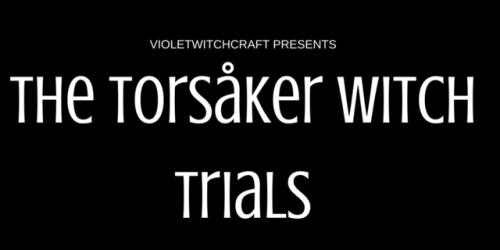#torsåker
Pictured above: The cells in which the accused were held while awaiting execution.
On June 1st, 1675 during an 8-year hysteria of witch-hunting in Sweden, 71 people were beheaded and burned. 65 women and 6 men.
1/5 of the women in the region were killed.
The Background
The Torsåker Witch Trials occurred from late 1674 to 1675, in the Torsåker Parish, Sweden. These trials are notable for being the largest witch trials to happen in Det Stora oväsendet (The Great Noise), Sweden’s title for a mass hysteria that lasted from 1668 and 1676 which lead to the death of 300 individuals on the basis of witchcraft. (It’s important to note that around 100 others lost their lives for witchcraft prior to this period, over the span of many years, but this time is notable as being a hysteria because of the sheer volume of deaths in such a short period.
At the time Sweden did not have a separation of church and state, which can partially explain how such a series of events came to be. The first trial of Märet Jonsdotter in Dalarna, 1668, was the event that is thought to have sent things spiralling. The minister of Ytterlännas parish, Laurentius Hornæus, was instructed by Johannes Wattrangius of Torsåker parish, to deal with the sudden explosion of witch hysteria in Torsåker.
The Accusations
Most of the ‘witnesses’ were children. The main point Hornæus pushed was that witches had abducted the children and taken them to Blåkulla, a meadow of Swedish folklore in which the devil held a court during a sabbat. Hornæus tortured the children in order to gain statements. Some of his punishments involved whipping, bathing the children in ice-cold water, even putting them in an oven and threatening to bake them. Some of the children were later found with their throats cut.
“His grandson, Jöns Hornæus, who wrote down the story in 1735 after it was dictated by his grandmother, Laurentius Hornæus’ wife Britta Rufina, was quoted as saying: “I remember some of these witnesses, who by these methods were in lack of health for the rest of their lives”. He adds that children were still, sixty years afterwards, afraid to go near the house where his grandfather lived.” (Source)
Even though around a hundred individuals of both sexes were accused by the children, mostly women took the fall. Many managed to escape death by being pregnant, running away or bribing the courts.
The Day Of Execution
Several months after the initial detainment and accusations of the victims, a sermon was held in Torsåker church. The 71 accused were lead to the place of execution. By this point, many of them were so malnourished from being refused food that their relatives had to carry them to their deaths.
The accused were decapitated, stripped naked, then burned at the stake.
Jöns Hornæus describes the execution in his book, where he wrote down the exact words of his grandmother who was a witness to the scene.
“Then they began to understand what would happen. Cries to heaven rose of vengeance over those who caused their innocent deaths, but no cries and no tears would help. Parents, men and brothers held a fence of pikes. (By which she meant that the men of the village, the family members of the prisoners, surrounded the prisoners with weapons) They were driven, seventy-one of them, of which only two could sing a psalm, which they repeated when they walked as soon as it ended. Many fainted on the way out of weakness and death wish, and those were carried by their families up until the place of execution, which was in the middle in the parish, half a mile from all the three churches, and called “The Mountain of the Stake.” (Source)

“Här brann häxbål 1675. Kvinnor dog, män dömde. Tidens tro drabbar människan.” A small memorial exists in Torsåker to this day. I am currently learning Swedish but I am fairly new to it, so please forgive any mistakes in this translation and feel free to post a better version if you are Swedish.
“Here burned a witchpyre (stake?), 1675.
Women died
Men judged
The faith of time
affects mankind.”
Sources:
In Swedish
- http://www.norrlandmagic.se/landskap/ångermanland/häxorna-i-torsåker-26940588
- http://web.comhem.se/lienn/torsakerhaxor.htm
In English
- http://www.hhogman.se/witch-trials-sweden.htm
- http://spangenhelm.com/largest-witch-trial-swedish-history/
- http://www.witchcraftandwitches.com/trials_torsaker.html
If you found this post interesting and want to help support my writing, consider leaving asmall tip :)
Post link



